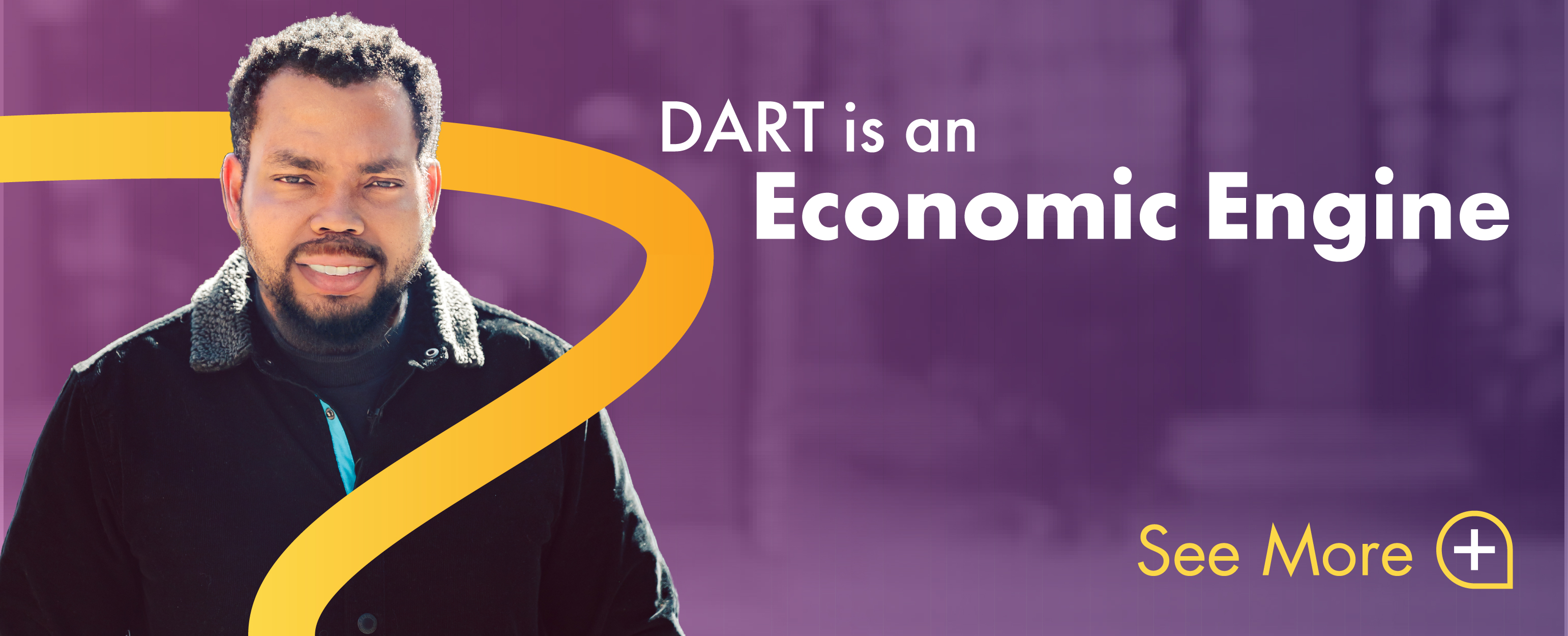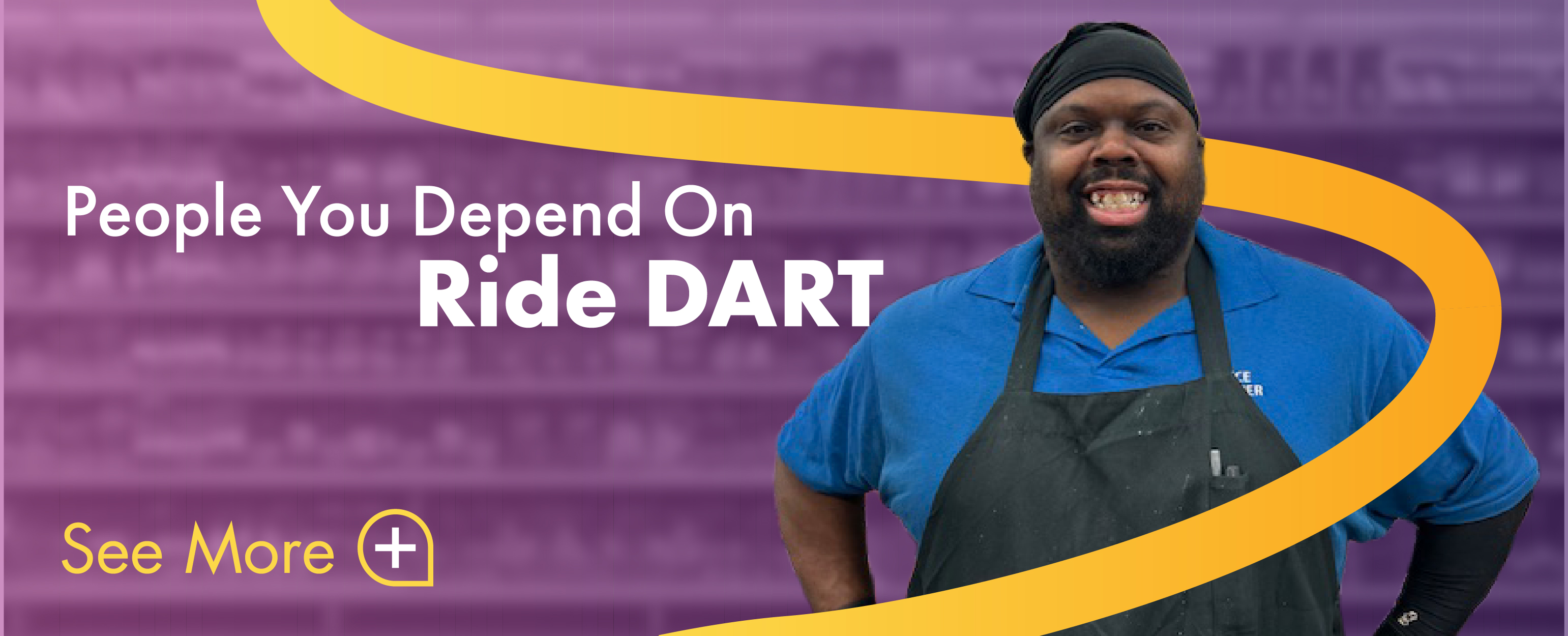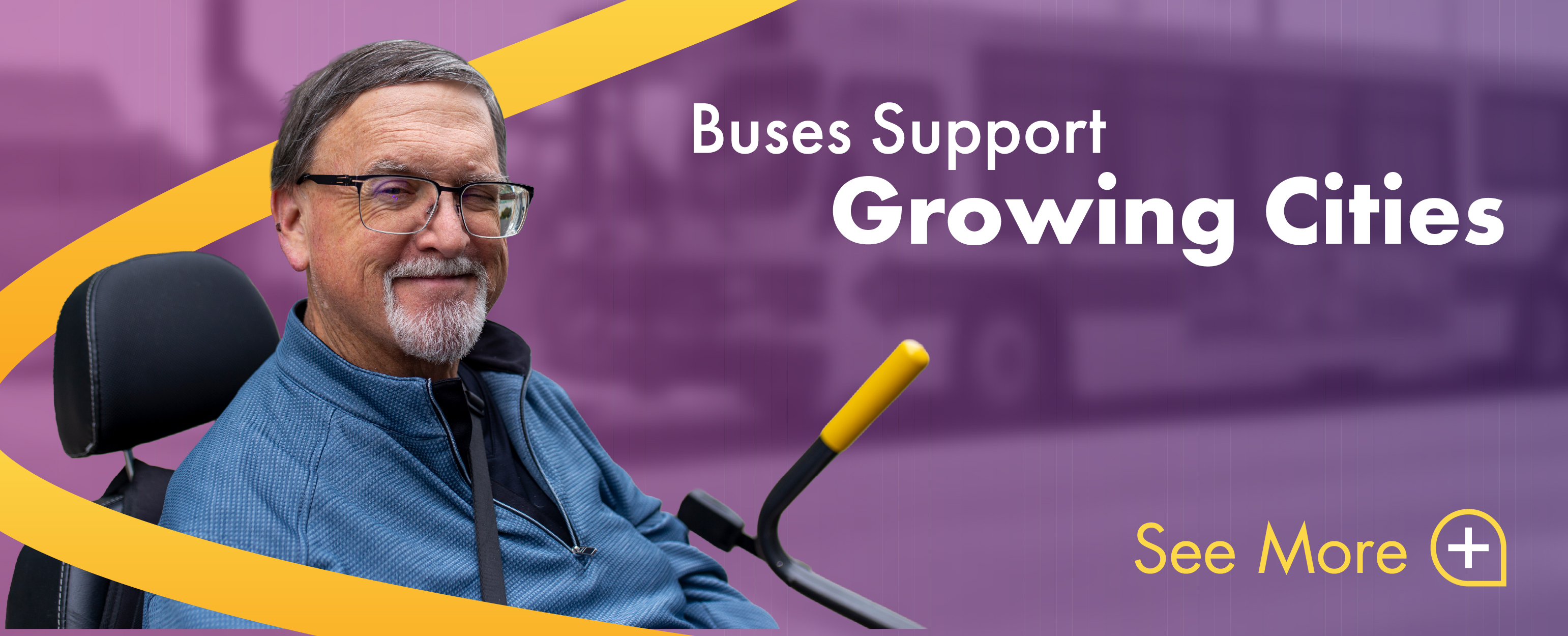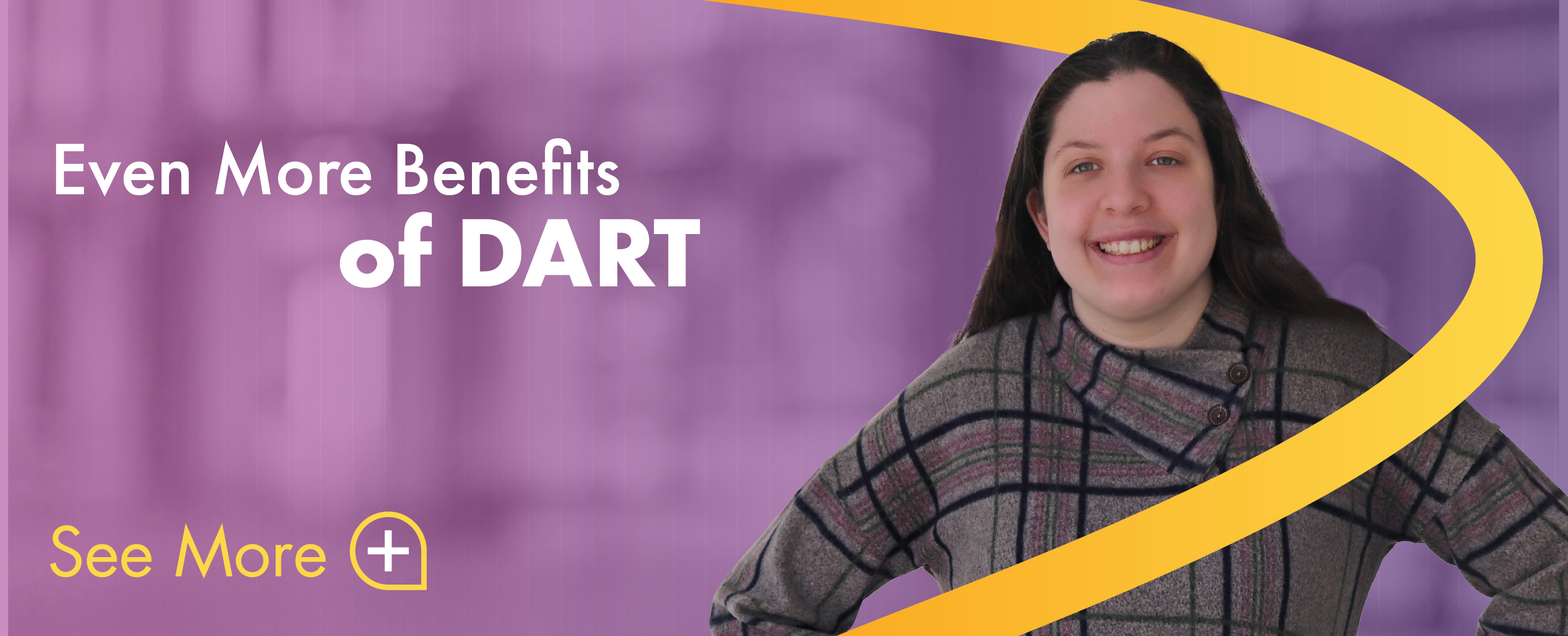WHAT DART DOES
Des Moines Area Regional Transit Authority (DART) provides public transportation across its participating member communities in the Greater Des Moines metro. DART serves the region using a mix of local bus routes and convenient demand-responsive services.
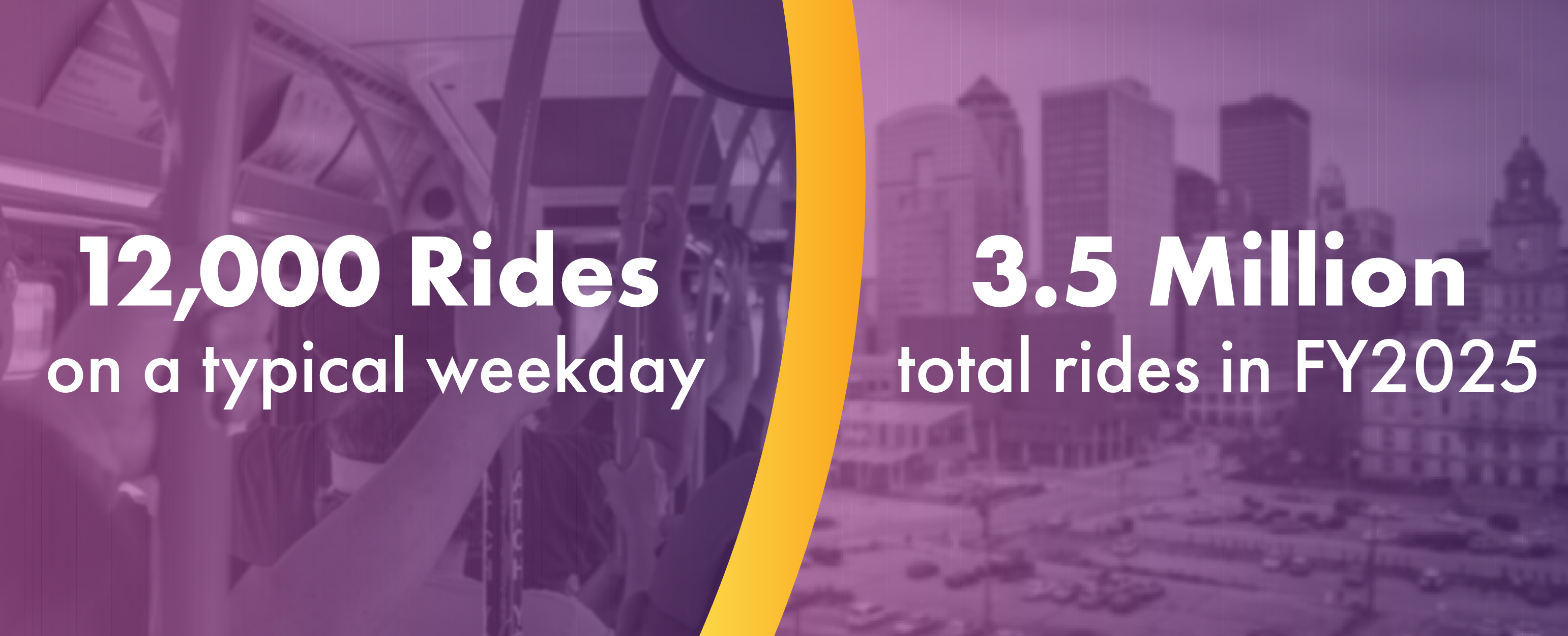
Our member communities, businesses and non-profit organizations invest in DART because they know a thriving community offers low-cost public transportation that connects employees to jobs, students to schools, people to healthcare, and shoppers to stores.
DART DRIVES LOCAL DOLLARS
A strong local economy is fueled by people making and spending money. Public transportation brings people to jobs to earn a paycheck and then to local businesses to spend their money how they want.
FACT: 9 out of 10 trips on DART allow people to earn or spend money.
-DART, Customer Satisfaction Survey, 2022
This function of transit can lead to great returns for the local economy.
FACT: Public transit generates $5 for every $1 dollar invested.
-American Public Transportation Association, 2020
Local business owners across our service area recognize the value of public transit for hiring employees and attracting potential customers.

"As a small business owner, it is incredibly important for people to be able to access our shop through transit – not just our employees, but our customers also."
– Kuuku Saah, co-owner of Mars Café
DART KEEPS BUSINESS MOVING
Educational institutions, healthcare facilities, grocery stores and other businesses need qualified workers to staff their business and keep them running smoothly. Some of these people ride DART buses.
FACT: 3 out of 5 rides on DART bring people to and from work.
-DART, Customer Satisfaction Survey, 2022
DART riders often challenge people’s expectations of who is a regular “bus rider.” People from all different backgrounds ride for a variety of reasons. They may want to save money, have a fear of driving, have a disability or want to support their active lifestyle. Some people simply enjoy riding the bus more than driving a vehicle.
FACT: All ages use DART!

Getting people to the right places at the right time is what DART is all about. Jon West is a Stock Manager at the Ingersoll Price Chopper and DART Rider.

"I have to get to work, so I chose a place I knew I'd be able to take the bus to get to."
— Jon, Stock Manager at Price Chopper
Read Jon’s full story on our blog.
DART SUPPORTS GROWING COMMUNITIES
The population of Greater Des Moines is expected to double in the next 30 years. As the region grows, public transportation becomes even more important to keep cities running smoothly.
FACT: Bus services reduce the use of single-occupancy vehicles on roadways, improving road congestion for everyone.
Between 2010 and 2022, the number of seniors (ages 65 and older) that live in Greater Des Moines grew by 52 percent. This population often chooses to drive less for safety, mobility or financial reasons and needs transportation services, like DART, to stay connected to their communities.
FACT: In 2024, DART provided 121,932 rides through its Paratransit and other mobility services.
- DART FY24 Annual Report, 2025 DART Budget Book
Central Iowans with unique medical needs rely on DART. Todd Kilzer moved from Madrid, IA to West Des Moines to be closer to local medical services and more accommodating housing. But eventually he had issues accessing those medical services and DART was there to help.

“[DART] is an essential service. It’s no different than other public entities. You may go your whole life and never call the police department… Just the same, you may go all your life and never need public transit, but you don’t know if that will change one day.
— Todd Kilzer, DART Paratransit Rider
Read Todd’s full story on our blog.
OTHER BENEFITS OF DART
Driving the economy, supporting mobility and helping grow communities are not the only ways Central Iowa benefits from DART:
- Des Moines Public Schools lowers its costs by contracting with DART to provide busing for some middle and high school students.
- DART is a partner in responding to regional emergencies, like providing the public free rides to Polk County extreme temperature shelters or bringing a vehicle to disaster sites to help those impacted take shelter from adverse weather.
- DART helps attract new business – along with jobs and tax dollars – to the region since access to public transit is a basic requirement for employers looking to locate in our area.
- Transit service helps those struggling with homelessness or other issues gain stability and thrive by allowing them to access affordable housing, social services and jobs.
- Limiting the use of single-occupancy vehicles by using public transportation is a great way to reduce your carbon footprint.

“Having a public transportation system really connects the community and gives people opportunities that they might not necessarily have otherwise.”
-Leetal Cohn, former Drake Student
Read Leetal’s full story on our blog.
HOW TO SUPPORT DART
Become a DART rider. The best way to support DART is to consider using our services or recommending them to others. Check out the public transit options near you in online trip planners, like Google— or better yet, try planning your trip in the MyDART Trip Planner online. Read our How To Ride webpage to prepare for your first ride.
Remember: The bus is for all of us.
Stay connected! You can follow us on Facebook, Instagram and LinkedIn for helpful information about riding and organizational updates.
Sign up for our Making Moves newsletter. Every quarter we share stories, project updates, and educational articles that explain public transit and demonstrates the value DART brings to Greater Des Moines.
Your voice matters. Let your elected officials know how public transit impacts your life and why it matters to our community. Learn who represents your community on the DART Board of Commissioners.
